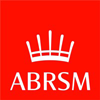Sonata in G major, 'Hamburger' for Flute and Continuo, Wq133
- Highly recommended
- Interesting, worth a look
- Recommended edition
From the Publisher
After leaving the employment of King Frederick the Great of Prussia and settling in Hamburg, C.P.E. Bach was freed from the conservative tastes of the royal court and able to indulge in bolder, more experimental kind of music. He believed in the new aesthetic ideals of his time demanding that music "touch the heart" and "awaken the passions." His works were daring for their time, some even considered bizarre by his contemporaries. Instrumental pieces specifically called “galant” increased rapidly in the chamber and solo literature during the third quarter of the 18th century, the same period in which the “Hamburg Sonata” (1786) was composed.
Galant, a term widely used to denote music with light accompaniment and pleasing melodies, was in stark contrast to the grandeur of the baroque. “Being galant, in general”, wrote Voltaire, “means seeking to please”.
The Hamburg Sonata is just that. Its embellishing 32nd notes ornament a simple melody in the Allegretto portraying the lightheartedness of this style. The Rondo is of equal delight in its dazzling display of flute flurries and flourishes surrounding a stately melody, clearly meant to charm the listener.
Movements
- Allegretto
- Rondo presto
Item Details
Instrumentation
- Part 1: Flute
- Part 2: Piano
Publisher: Schott
Publisher's reference: FTR 1
Part of the Il Flauto Traverso series
Our Stock Code: 965071
Media Type: Paperback (20 pages [score])
 ABRSM Flute (Ongoing)
ABRSM Flute (Ongoing) Trinity College London Flute (Ongoing)
Trinity College London Flute (Ongoing)




